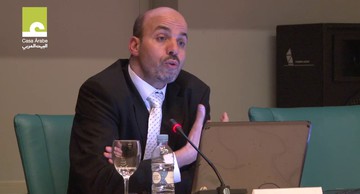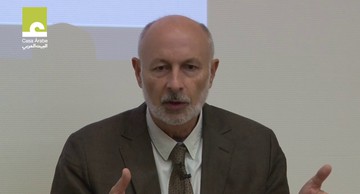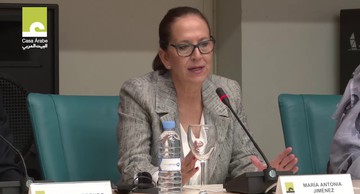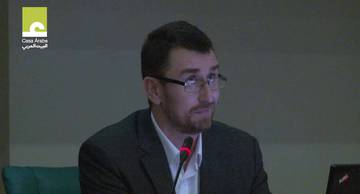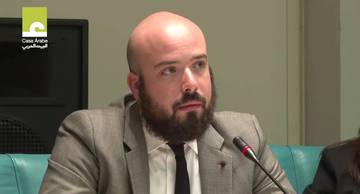

Día de la Ciencia 2022: "Desde las figuras de polvo a las Matemáticas en al-Ándalus"
Published at 34 04,,, 22 2022
ALL VIDEOS IN THIS CATEGORY
-
Fez, a historical capital in northern Morocco (in French)
In the late eighth century, Idris bin Abd Allah created Madinat Fas, on the right bank of a river bearing the same name. At the beginning of the ninth century, his son strengthened this city as the capital of the Idrisid dynasty, creating another town on the left bank of the river (809). For two centuries, Fez preserved both centers of population, one facing the other in constant rivalry. In the late eleventh century, the Almoravid emir, Yusuf ben Tashufin, did away with this duality, uniting both areas behind one single city wall and building a citadel at the top. Years later, the Almohads besieged Fez for a long period of time, until in 1145 they managed to enter it, harshly punishing the city, then destroying its citadel and walls, which the Almohad caliph al-Nasir would have rebuilt in 1212. In the middle of the same century, the Merinid dynasty conquered Fez, making it their capital city while creating a new duality by founding the “new Fez,” Fez Al-Jadid, an area dedicated mainly to the court and government, whereas the old Fez concentrated on handicrafts and trade. Today Fez is a lively city of great importance in religious and cultural affairs. It is the third largest city in Morocco and one of those most visited by tourists. It is a UN World Heritage site with a rich historical past forced to live side-by-side with its intense modern life.Published at 32 29,,, 16 2016 -
Challenges posed by transitions in authoritarian Arab regimes
The authoritarian regimes in Arab countries have responded to the pressures for transformation and coping with challenges in different ways. Some have failed in their management of this transition, leading to armed conflicts or the state’s collapse, while others have simply reproduced an authoritarian form of power, as stable as it is fragile. What exactly has determined the way each responds, the paths they have taken and the outcomes in each specific case? Can the “end of the rentier state model” provide a useful framework for understanding the crisis in many Arab states and their options for the future?Published at 31 29,,, 16 2016 -
Fighting for children’s rights in Mauritania (In French)
With a population of approximately 3 million people, Mauritania is ranked amongst the most impoverished countries in the world according to the Human Development Index. Of its inhabitants, 42% live below the poverty line, and minors under the age of 18 account for 46% of the population. Girls and boys live in a state of vulnerability that compromises their future and fails to provide them with the opportunities they deserve, finding themselves forced from a very early age to contribute to the family economy, leaving school and becoming exposed to dangers such as labor exploitation, sexual abuse and forced marriages.Published at 31 29,,, 16 2016 -
Islamic Cairo and Fustat: From Arab conquest to the French expedition (in French)
Stephane Pradines, a professor from the Aga Khan University in the United Kingdom, gave this conference at the Casa Árabe headquarters in Madrid. While the history of Cairo has been well-known in Arab and Latin sources, the archeology of Cairo has remained practically terra incognita. We have no archeological evidence form the Abbasid cities of al-Askar and al-Qatai, and our knowledge about the urbanization and layout planning of the Fatimid city has essentially been handed down to us by historians on the basis of the writings of Maqrizi. If to this we add a theoretical model developed by historians, we end up with a biased archeological viewpoint of the city, limited to just the excavations in the ancient city of Misr-Fustat. Therefore, the excavations by the Aga Khan Trust for Culture and the French Institute of Archeology have provided an incipient, innovative body of knowledge on medieval Cairo that may be destroyed at any time by modern construction and corrupt businessmen.Published at 37 20,,, 16 2016 -
The role of civil society and women in Syria’s reconstruction
Thinking about the Syrian crisis does not mean just talking about the conflict right now, but also what will happen “the day after.” The war has caused hundreds of thousands of victims, along with millions of internally displaced persons and refugees. When the violence eventually comes to an end and the country’s reconstruction begins, the Syrian people will need new skills to help the transition process move forward. In June 2014, the European Union launched the Tahdir Initiative (“tahdir” meaning “preparation” in Arabic) with the general objective of supporting committed Syrians in different arenas with the process of transition towards a peaceful, democratic, inclusive new Syria. Tahdir consists of educational programs, professional internships, skill-building seminars, non-academic scholarships and travel for study. At this first presentation, the highlight will be placed on the role of women and the drafting of an inclusive constitution.Published at 35 20,,, 16 2016

